Opinion

A 71-year-old White female developed erosions after hip replacement surgery 2 months prior to presentation
- Author:
- Donna Bilu Martin, MD
Direct immunofluorescence was positive for linear/granular IgG deposition throughout the epithelial cell surfaces.
Opinion

A young adult with a 1-year history of erythema, papules, and pustules on her cheeks and skin
- Author:
- Mallory Towe, MS
- Donna Bilu Martin, MD
The etiology is unknown but has been speculated to be hormone-related as it is more common in women and can be triggered by acute changes, such as...
Opinion

A 55-year-old female presented a with few years' history of pruritic plaques on her shins and wrists
- Author:
- Lucas Shapiro, BS
- Donna Bilu Martin, MD
A woman presents with thick, pruritic, erythematous plaques on her shins and wrists that come and go.
Opinion
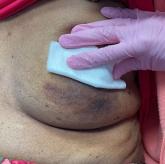
An 88-year-old Black woman presented with 3 months duration of asymptomatic, violaceous patches on the left breast
- Author:
- Lucas Shapiro, BS
- Donna Bilu Martin, MD
The patient's history is significant for breast cancer.
Opinion

A 45-year-old White woman with no significant medical history presented with a 1-month history of lesions on the nose and right cheek
- Author:
- Donna Bilu Martin, MD
Erythematous papules, vesicles, and erosions with an annular crusted border were present on the nose and cheeks.
Opinion
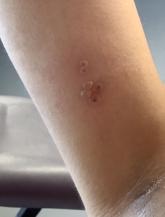
A healthy 36-year-old female presented with 4 days of itchy lesions on the right upper extremity
- Author:
- Lucas Shapiro, BS
- Donna Bilu Martin, MD
The patient had no systemic symptoms, but did have mild lymphadenopathy.
Opinion
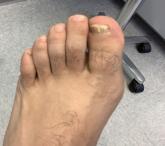
White male presents with pruritic, scaly, erythematous patches on his feet and left hand
- Author:
- Donna Bilu Martin, MD
A 47-year-old patient presents with pruritic, scaly, erythematous patches on his feet and left hand.
Opinion

A 50-year-old woman with no significant history presented with erythematous, annular plaques, and papules on the dorsal hands and arms
- Author:
- Lucas Shapiro
- Donna Bilu Martin, MD
A 50-year-old has had erythematous, annular plaques, and papules on her hands and arms for years.
Opinion

A 9-year old female presented with 1 day of fever, fatigue, and sore throat
- Author:
- Lucas Shapiro
- Donna Bilu Martin, MD
A 9-year old presents with a fever of 103° F, fatigue, and sore throat, and a papular, erythematous rash on the trunk.
Opinion
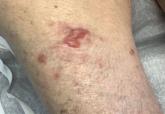
A 95-year-old White male with hypertension presented with itchy patches and bullae on the trunk and extremities
- Author:
- Lucas Shapiro
- Donna Bilu Martin, MD
The patient takes many medications, including lisinopril for his hypertension.
Opinion
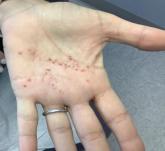
A White female presented with pustules and erythematous macules on the left palm
- Author:
- Lucas Shapiro, BS
- Donna Bilu Martin, MD
A 53-year-old White female presented with itchy pustules and erythematous macules on the left palm.
Opinion
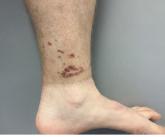
A healthy White male presented with a rash consisting of erythematous to purpuric macules
- Author:
- Donna Bilu Martin, MD
A healthy White man develops erythematous to purpuric macules on his lower extremities a few days after a visit to Disney World.
Opinion

A Hispanic male presented with a 3-month history of a spreading, itchy rash
- Author:
- Donna Bilu Martin, MD
A 48-year-old Hispanic male with no significant medical history presented with a 3-month history of a spreading, itchy rash on his trunk, buttocks...
Opinion

A 64-year-old woman presents with a history of asymptomatic erythematous grouped papules on the right breast
- Author:
- Donna Bilu Martin, MD
A 64-year-old woman with a history of breast cancer presents with a 1-year history of asymptomatic erythematous grouped papules on the right...
Opinion

75-year-old White male presenting with progressive pruritus and a worsening rash
- Author:
- Susannah Berke, MD
- Damon McClain, MD
- Donna Bilu Martin, MD
A man with dermatitis herpetiformis, well controlled on dapsone, presented with progressive pruritus and a worsening rash.
